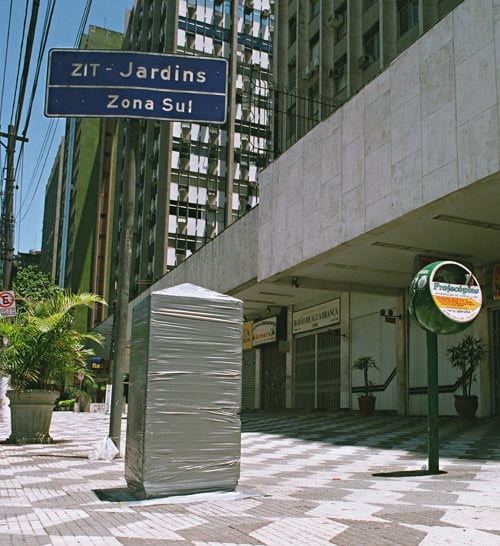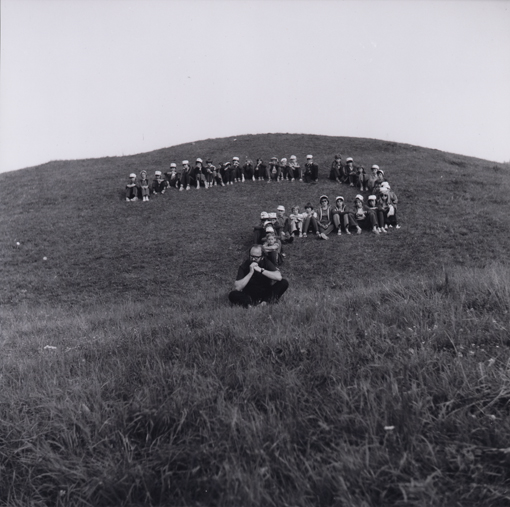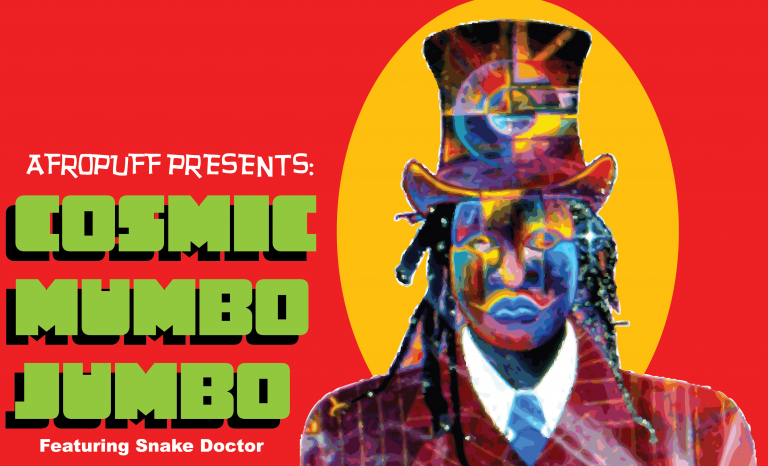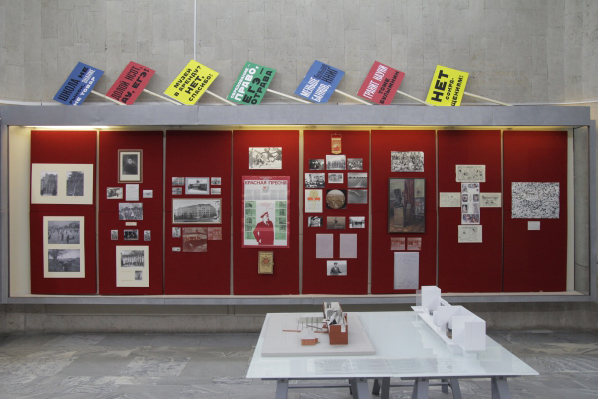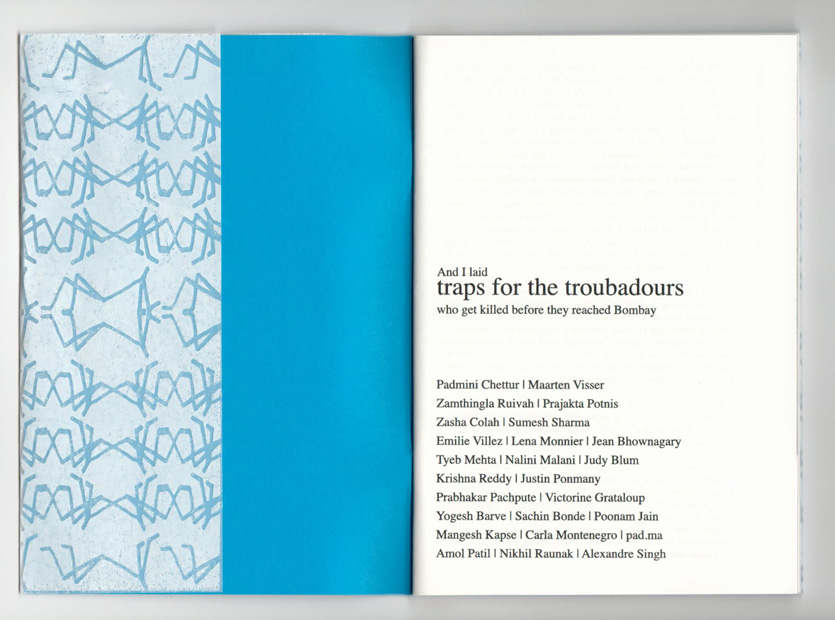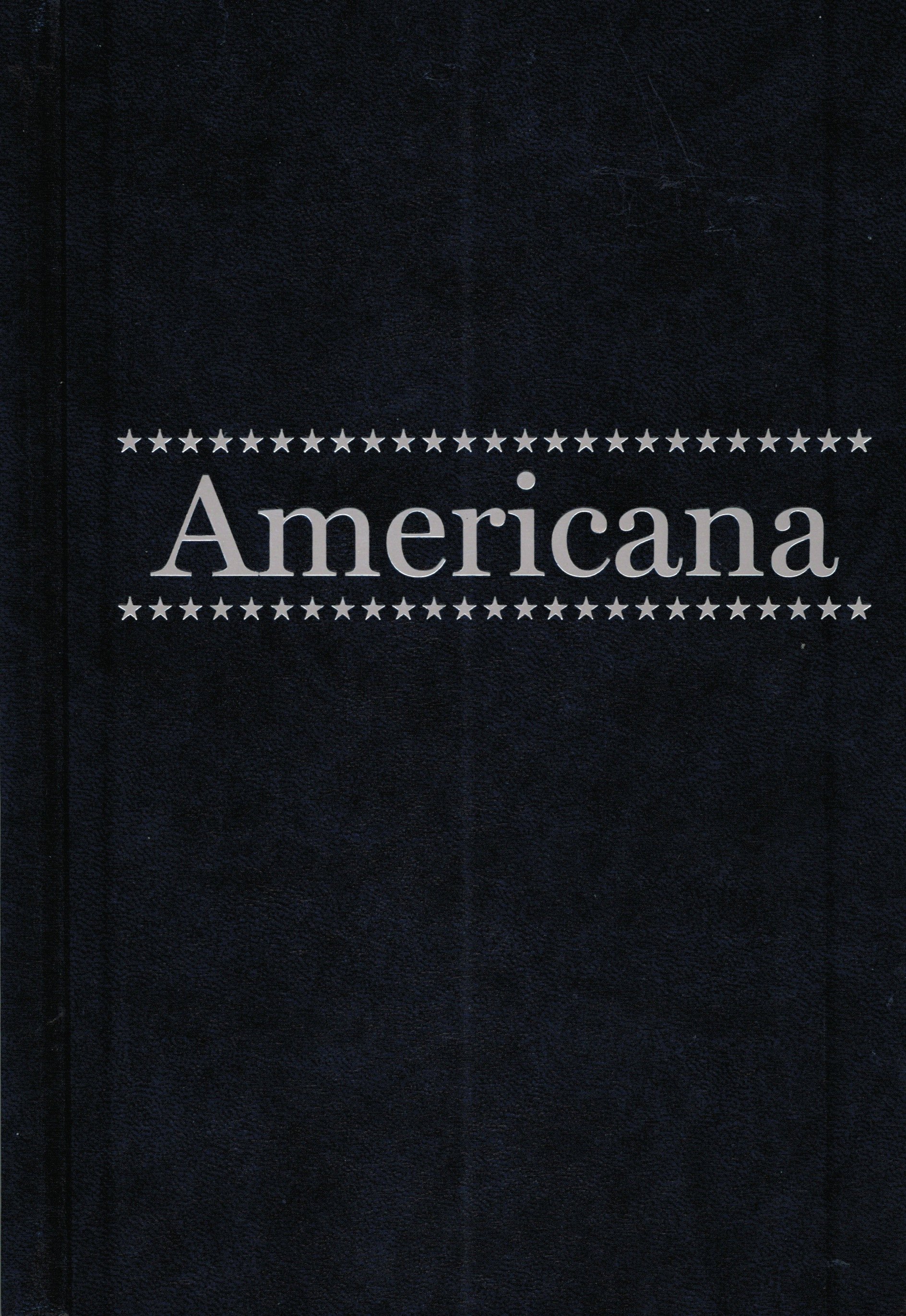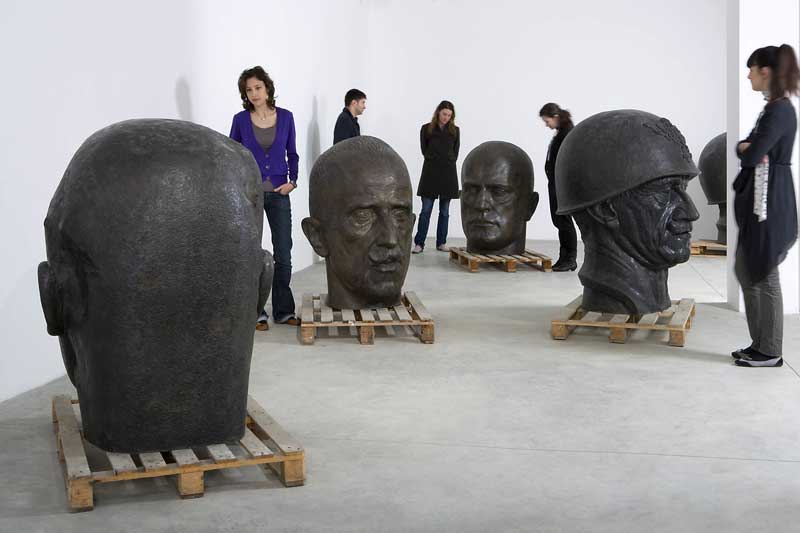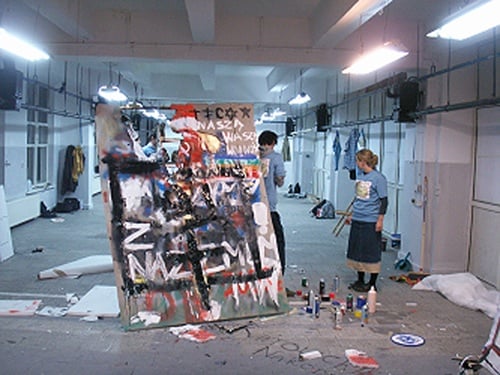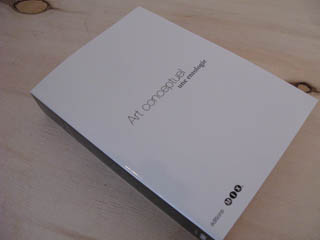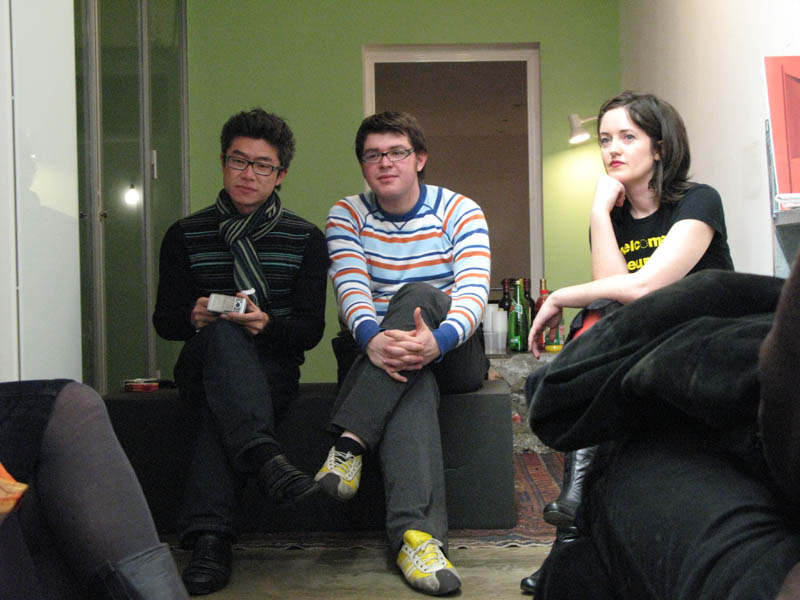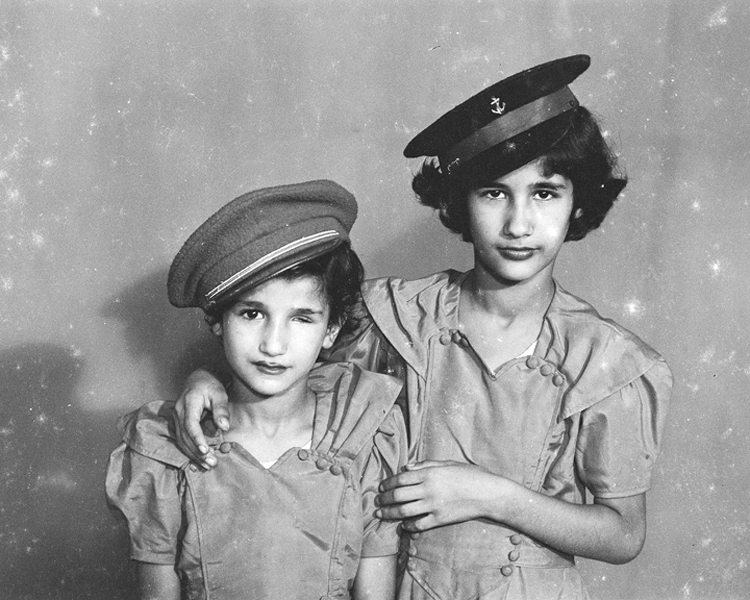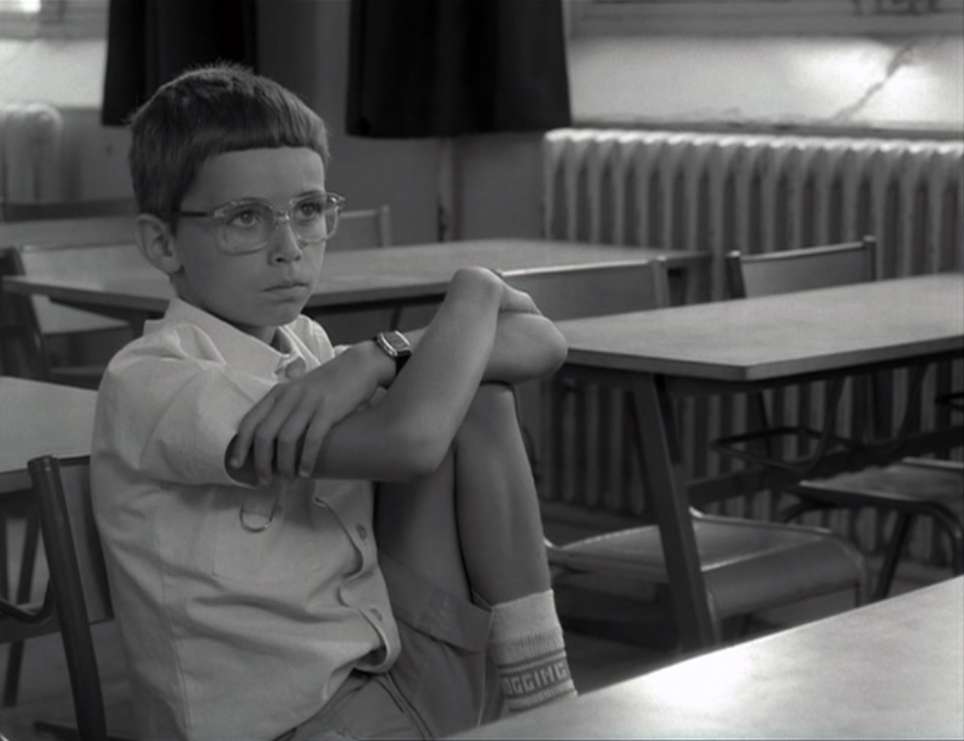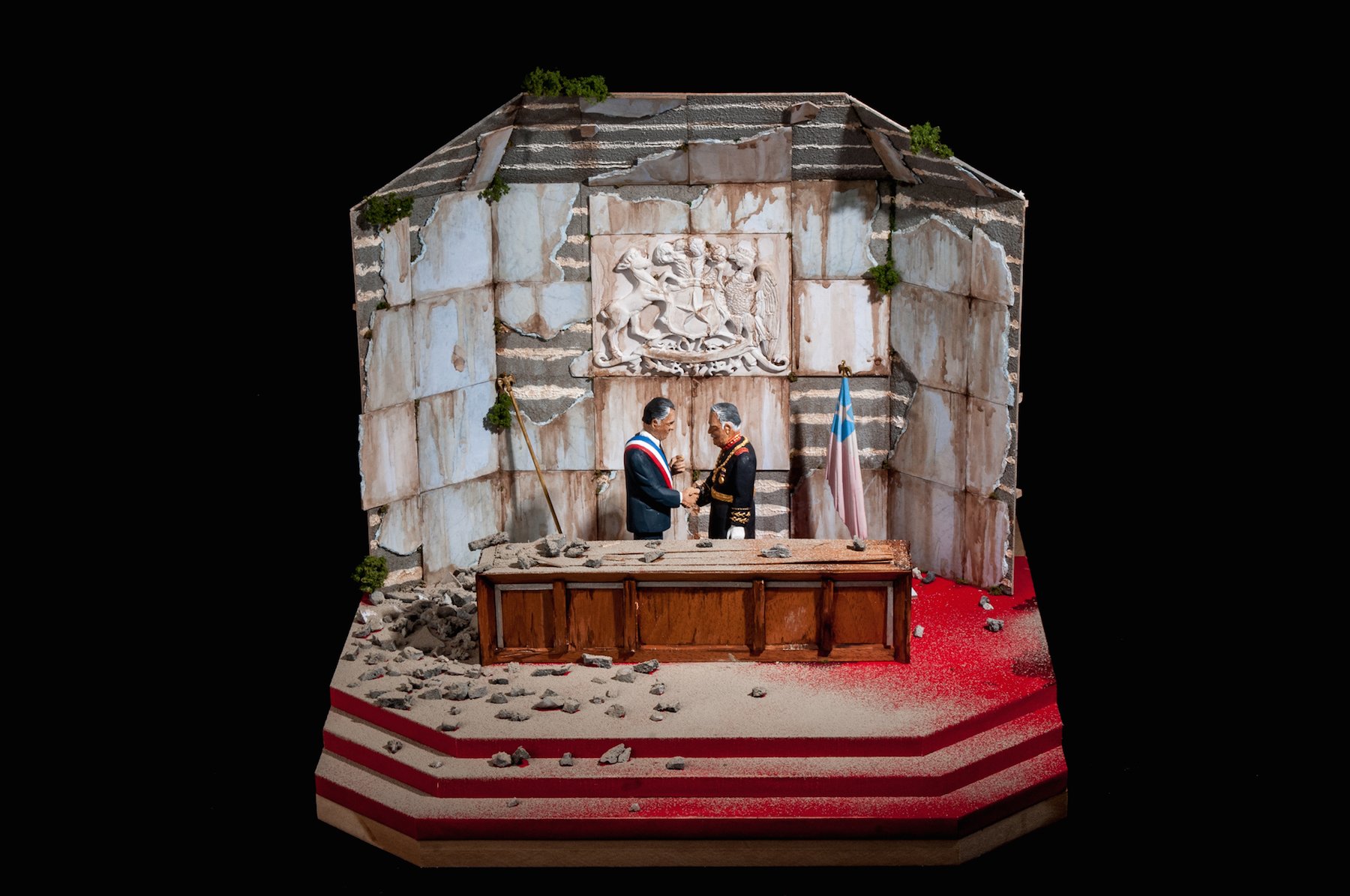
© » KADIST
Jonas Bendiksen
For his project Book of Veles artist Jonas Bendiksen travelled to the small city of Veles in North Macedonia, inspired by a series of press reports starting in 2016, that revealed Veles as a major source of the fake news stories flooding Facebook and other social media sites celebrating Donald Trump and denigrating Hillary Clinton. Scores of young people in the impoverished city had discovered that they could make a decent living by fabricating and circulating stories online. Originally presented as a book, Bendiksen’s haunting images show the city of Veles and its inhabitants.

© » KADIST
Jonas Bendiksen
For his project Book of Veles artist Jonas Bendiksen travelled to the small city of Veles in North Macedonia, inspired by a series of press reports starting in 2016, that revealed Veles as a major source of the fake news stories flooding Facebook and other social media sites celebrating Donald Trump and denigrating Hillary Clinton. Scores of young people in the impoverished city had discovered that they could make a decent living by fabricating and circulating stories online. Originally presented as a book, Bendiksen’s haunting images show the city of Veles and its inhabitants.

© » KADIST
Jonas Bendiksen
For his project Book of Veles artist Jonas Bendiksen travelled to the small city of Veles in North Macedonia, inspired by a series of press reports starting in 2016, that revealed Veles as a major source of the fake news stories flooding Facebook and other social media sites celebrating Donald Trump and denigrating Hillary Clinton. Scores of young people in the impoverished city had discovered that they could make a decent living by fabricating and circulating stories online. Originally presented as a book, Bendiksen’s haunting images show the city of Veles and its inhabitants.

© » KADIST
Sinzo Aanza
Projet d’attentat contre l’image? (Acte 3) by Sinzo Aanza brings together literature and objects in their varied forms. This project stems from the artist’s interest in the syncretism that emerged after Congo’s independence in 1960.

© » KADIST
Jonas Bendiksen
For his project Book of Veles artist Jonas Bendiksen travelled to the small city of Veles in North Macedonia, inspired by a series of press reports starting in 2016, that revealed Veles as a major source of the fake news stories flooding Facebook and other social media sites celebrating Donald Trump and denigrating Hillary Clinton. Scores of young people in the impoverished city had discovered that they could make a decent living by fabricating and circulating stories online. Originally presented as a book, Bendiksen’s haunting images show the city of Veles and its inhabitants.

© » KADIST
Jonas Bendiksen
For his project Book of Veles artist Jonas Bendiksen travelled to the small city of Veles in North Macedonia, inspired by a series of press reports starting in 2016, that revealed Veles as a major source of the fake news stories flooding Facebook and other social media sites celebrating Donald Trump and denigrating Hillary Clinton. Scores of young people in the impoverished city had discovered that they could make a decent living by fabricating and circulating stories online. Originally presented as a book, Bendiksen’s haunting images show the city of Veles and its inhabitants.

© » KADIST
Jonas Bendiksen
For his project Book of Veles artist Jonas Bendiksen travelled to the small city of Veles in North Macedonia, inspired by a series of press reports starting in 2016, that revealed Veles as a major source of the fake news stories flooding Facebook and other social media sites celebrating Donald Trump and denigrating Hillary Clinton. Scores of young people in the impoverished city had discovered that they could make a decent living by fabricating and circulating stories online. Originally presented as a book, Bendiksen’s haunting images show the city of Veles and its inhabitants.

© » KADIST
Jonas Bendiksen
For his project Book of Veles artist Jonas Bendiksen travelled to the small city of Veles in North Macedonia, inspired by a series of press reports starting in 2016, that revealed Veles as a major source of the fake news stories flooding Facebook and other social media sites celebrating Donald Trump and denigrating Hillary Clinton. Scores of young people in the impoverished city had discovered that they could make a decent living by fabricating and circulating stories online. Originally presented as a book, Bendiksen’s haunting images show the city of Veles and its inhabitants.

© » KADIST
Rahima Gambo
“ I think we are oversaturated, filled to the brim with images in our inner subconscious eye. Towards the end of 2020, I was feeling very much that I couldn’t take in any more information visually. That was when I made Instruments of Air.

© » KADIST
Sofía Córdova
Set some time in the future, Sofía Córdova’s multi-channel film installation GUILLOTINÆ Wanna Cry, Act Yellow: Break Room imagines a public that worships pop stars and revolutionary leaders equally. The three channels of the video blend visual materials from pop culture, politics, news, and fine art, as well as choreographed dancers miming quotes from philosophers, reality television stars, radical political figures, and YouTube comment sections. Intermittently, they are interrupted or obscured by archival footage of press conferences, rallies, revolutions, invasions, and uprisings from the last century.
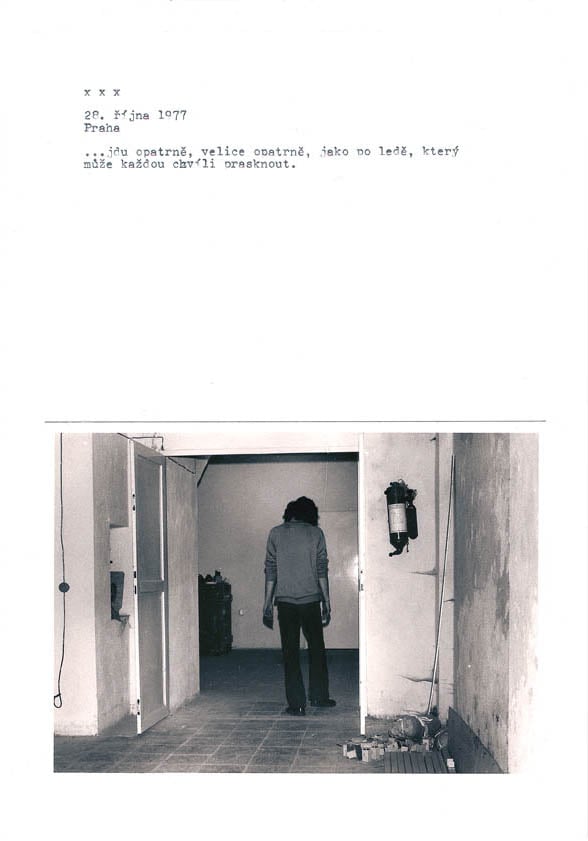
© » KADIST
Jiri Kovanda
Kovanda’s ‘discreet’ actions (leaving a discussion in a rush, bumping into passers-by in the street, making a pile of rubbish and scattering it, looking at the sun until tears come…) are always documented according to the same format: a piece of A4 paper, a concise typewritten text, and sometimes a photograph taken by someone else. This action, walking abnormally slowly, questions the place of the individual within the space of a city with regards to social habits. Kovanda places himself slightly outside the regulated rhythm of the city walking.

© » KADIST
Cameron Rowland
Rowland’s minimal installations require a focus not on the objects themselves, but on the conditions of their creation, use, and distribution. Who controls the services that contemporary citizens take for granted—like power, water, heat? Who makes these objects that deliver these services?

© » KADIST
Szabolcs Kisspál
Lifesize Draft is the second of two sculptures on a similar theme, the first one being Utopia Battery, (2008). The latter is also in an edition of 3, one of which is in the collection of the Ludwig Muzeum, Budapest. Although Lifesize Draft was made after Utopia Battery, Kisspal conceived it more or less at the same time and sees the two works as closely related.
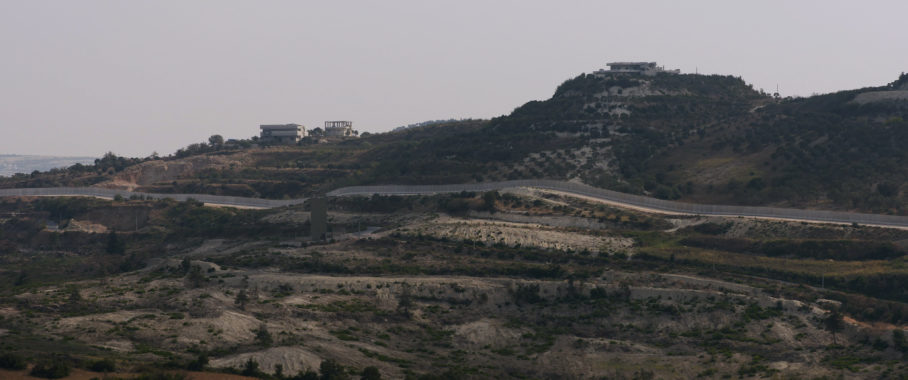
© » KADIST
Eric Baudelaire
Baudelaire’s latest film, Also known as Jihadi (2017) tells the story of a young French boy from Parisian suburbs and his assumed journey to the Al-Nusra front in Syria to join ISIS and fight Bashar al-Assad’s regime. Employing the cinematographic approach known as ‘landscape theory’ — or fûkeiron — developed out of Marxist film criticism in the 1970s where the landscape of a film is read as an expression of the political climate, thus becoming a significant character, motivation or reasoning for the films development. The 101-minute follows Abdel Aziz from the socially and politically rife milieu of the Parisian suburbs, weighted by division, segregation, development and poverty to, what the viewer assumes, Syria.

© » KADIST
Wang Tuo
Distorting Words is the second chapter of The Northeast Tetralogy , a film project that Wang Tuo began in 2017. The project is a unique regional research of Northeastern China that addresses the region’s geopolitical contentions. Drawing on significant moments from China’s modern history, Wang’s visual storytelling sets up and displaces a series of socio-historical situations through multiple narrative structures.

© » KADIST
Arseny Zhilyaev
His large installation entitled The Museum of Proletarian Culture (2012) looked at the changes in artistic practice that have occurred in Russia throughout the last thirty years – from the amateur art of the late Soviet era to the commercialized post-Soviet cultural practices and the more recent self-expression via contemporary social networks. Thus, the exhibition becomes a whole installation where it is impossible to distinguish architecture from assemblage, facts from fantasy, document from fiction. It is a museum of museums where viewers find themselves in the era of didactic exhibitions; whereby the main protagonists are workers, engineers, and amateur artists, and finally replaced by the creative class of 1990s and 2000s.

© » KADIST
Pu Yingwei
ChinaCapital: Dream, Hot Land, Interstellar Colonization by Pu Yingwei addresses a complicated phenomena of intertwined influences from different political powers, capital forces, and ideologies in the reality of China. The background of this painting is taken from an image of a Russian stamp featuring a space odyssey during the Cold War with the US. The composition juxtaposes colors from the Chinese national flag (red and yellow) and the US national flag (blue and red), echoing the current “cold war” between China and the U. S. Usually found surrounding a big star on the Chinese national flag, the 4 stars are here rearranged into a single line, symbolizing the artist’s wish for a decentralised and equal society.

© » KADIST
Hama Goro
Drawing & Print (Drawing & Print)
Hama Goro works with a traditional method called the Bogolan technique, which is inspired by a method used in Mali to color clothes. The ingredients of the various colors originate from natural products such as clay, leaves and bark. The colors had a symbolic significance and were used during ritual ceremonies.
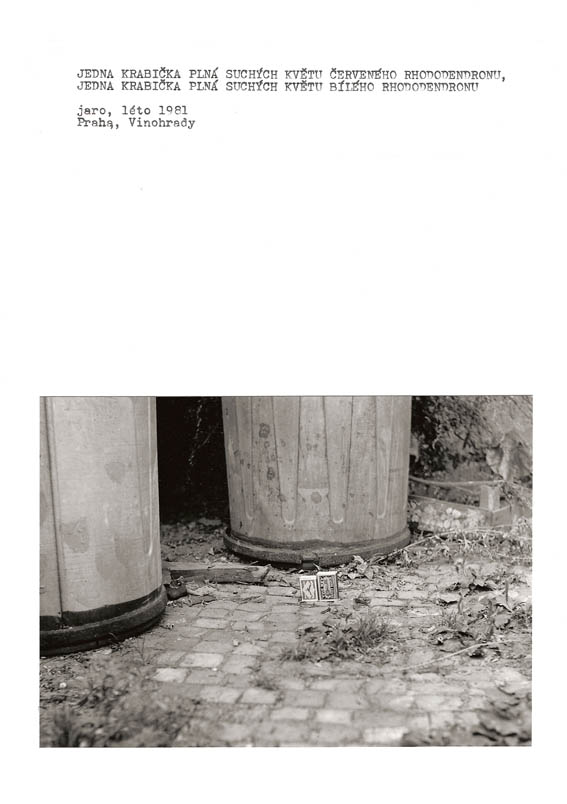
© » KADIST
Jiri Kovanda
Kovanda’s street interventions are always documented according to the same format as the actions: a piece of A4 paper, a typewritten text giving a precise location and date, and a photograph. Contrarily to the actions, he took the photographs himself. One of the rules he stuck to in his artistic practice was to always use material at his disposal, a real economy of means.

© » KADIST
Bady Dalloul
Drawing & Print (Drawing & Print)
The Great Game is a series of works composed of a number of card combinations illustrated by the faces of key political figures shaping the geopolitical landscape in the Middle East. Each reconstituted ‘hand of play’ corresponds to a diplomatic treaty establishing or modifying geographical borders. The plastic form of a poker hand chosen by the artist highlights the randomness of the process of fixing boundaries and the way in which they do not account for the lives of those located there.

© » KADIST
Brook Andrew
This year: missing witness by Brook Andrew consists of a multi-layered collage of photographs. The work features newspaper cut-outs of the phrases: “This year: be prepared…” and “missing witness” overlaid onto a disaster scene, upon a worn-up manuscript. Pulled from The New York Times , the image is of a destroyed temple on the Indonesian island of Sulawesi, that has increasingly experienced natural disasters due to climate change.

© » KADIST
Vuth Lyno
25 by Vuth Lyno addresses the legacy of the UN’s 1992-93 peacekeeping operation in Cambodia (UNTAC). This operation steered the country’s transition out of three decades of war and destruction—civil war, the Khmer Rouge era (1975-79), and the factional conflicts of the 1980s—towards a new, ‘democratic’ future. It was the most ambitious and successful UN peacekeeping mission of its time.

© » KADIST
Martha Araújo
In Habito/Habitante , the suspended material renders the wall a prison and the participant a prisoner. The liberating impulsion releases the participant. The act of freeing oneself, of flying, and escaping from constraints is an action that is both extremely symbolically and physically significant.

© » KADIST
Khvay Samnang
Originally commissioned for documenta 14, Khvay Samnang’s two-channel video work Preah Kunlong (The way of the spirit) takes land politics, resource extraction and Indigenous Cambodian resistance as its primary concern. Created in collaboration with the classically-trained dancer and choreographer Nget Rady — who is also the performer in the video — Preah Kunlong powerfully utilizes a lexicon of gestures and movement to point toward the need for embodied forms of knowledge and understanding amidst the mechanistic frameworks of rapacious development, which are threatening not just forests and Indigenous communities in Southeast Asia, but also worldwide. More specifically, Preah Kunlong offers a proposal for the language of the body to exercise what political ecologist Nancy Lee Peluso has called “counter-mapping”, a form of “critical cartography” that has been practiced by Indigenous forest communities in Southeast Asia to strengthen claims on their traditional territories and resources by defying hegemonic mapmaking methods, which have long abetted strategies of colonial rule and resource extraction.

© » KADIST
Gabriel Borba Filho
Gabriel Borba Filho was aware of what was happening on the other side of the Atlantic, and Untitled (Nos) is linked to both the social and political climates in Brazil and Spain during the Franco period. The title Nos (Us) echoes this sharing of a situation of misfortune. He was particularly touched by the execution of Salvador Puig Antich, to whom this work pays homage, and also by the political assassination of one of his best friends.

© » KADIST
The Propeller Group and Superflex
Fade In (the whole title of the film is actually the entire five page script) is a collaboration with the Danish artist collective Superflex (group of freelance artist–designer–activists committed to social and economic change, founded in 1993 by Jakob Fenger, Rasmus Nielsen and Bjørnstjerne Christiansen). There are several time layers to understand the story behind this film. In 1601, the San Jago set sail from Goa for Lisbon; the cargo included the first consignment of South East Asian porcelain destined for the European market.

© » KADIST
Ahmad Fuad Osman
Recollections of Long Lost Memories by Ahmad Fuad Osman is a series of 71 black and white sepia-toned archival photographs that chart, with nostalgia, the social encounters between hierarchies of life in the Malay world. It begins with British colonial rule in the mid 1800s, followed by its occupation by Japanese forces in the 1940s, the rise of Communism in the 1950s, and then the racial issues between Islamic, Chinese, and Indonesian populations in a multicultural country desiring political independence in the 1960 and 70s. The archival photographs in this series were gleaned from national archives, museums, libraries, and old books across Malaysia.
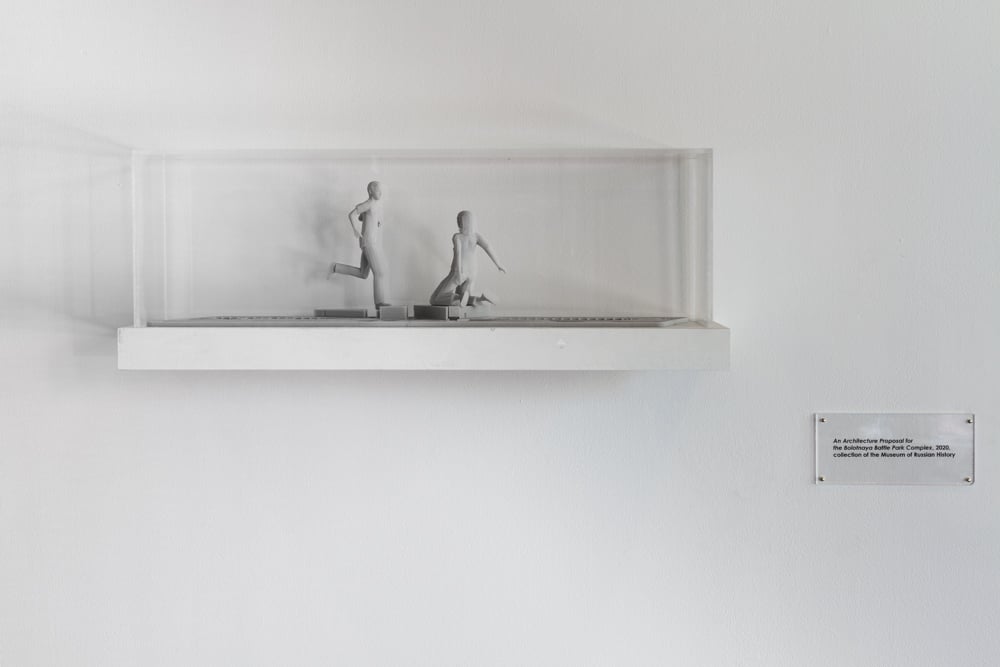
© » KADIST
Arseny Zhilyaev
The Bolotnaya Battle Park Complex is the future home for the Museum of Russian History (M. I. R.). Located on the grounds of Bolotnaya square in Moscow, this park sits on top of what once was a swamp. Above the main building stand two bio-engineered ‘living sculptures’, which strike various poses to commemorate the brave acts of those defending the federation from foreign intervention during protests of May 6th, 2012.

© » KADIST
Bady Dalloul
Drawing & Print (Drawing & Print)
geopoliticalThe Great Game is a series of works composed of a number of card combinations illustrated by the faces of key political figures shaping the geopolitical landscape in the Middle East. Each reconstituted ‘hand of play’ corresponds to a diplomatic treaty establishing or modifying geographical borders. The plastic form of a poker hand chosen by the artist highlights the randomness of the process of fixing boundaries and the way in which they do not account for the lives of those located there.

© » KADIST
Arseny Zhilyaev
His large installation entitled The Museum of Proletarian Culture (2012) looked at the changes in artistic practice that have occurred in Russia throughout the last thirty years – from the amateur art of the late Soviet era to the commercialized post-Soviet cultural practices and the more recent self-expression via contemporary social networks. Thus, the exhibition becomes a whole installation where it is impossible to distinguish architecture from assemblage, facts from fantasy, document from fiction. It is a museum of museums where viewers find themselves in the era of didactic exhibitions; whereby the main protagonists are workers, engineers, and amateur artists, and finally replaced by the creative class of 1990s and 2000s.
Jonas Bendiksen
Jonas Bendiksen is a Norwegian-American artist and photographer whose work addresses enclaves, people on the fringes of society, and those living in isolated communities...
Arseny Zhilyaev
Arseny Zhilyaev is arguably one of the most influential contemporary Russian artists of his generation...
Wang Tuo
Through film, performance, painting, and drawing, artist Wang Tuo interweaves disparate realities through archives, modern history, myth, and literature...
Bady Dalloul
Bady Dalloul cunningly employs collage across various media: texts, drawings, video, and objects to produce powerful works commenting on the past and the present...
Andrea Bowers
- location: Los Angeles, California
- year born: 1965
- gender: female
- nationality: American
- home town: Wilmington, Ohio
Karla Kaplun
Karla Kaplun’s practice centers on micro-utopias, the construction and functioning of collective memory, as well as mechanisms of political and economic power and control...
Jiri Kovanda
- location: Praha, Ceská Republika
- year born: 1953
- gender: male
- nationality: Czech
Claudia Joskowicz
Claudia Joskowicz is a video and installation artist working at the intersection of landscape, history, and memory...
Milena Bonilla
Milena Bonilla’s discursive practice explores connections among economics, territory, transit, and politics through everyday interventions...
Pedro Reyes
- location: Mexico City, Mexico
- year born: 1972
- gender: male
- nationality: Mexican
- home town: Mexico City, Mexico
Eric Baudelaire
Currently based in Paris, Franco-American artist Eric Baudelaire has developed an oeuvre primarily composed of film, but which also includes photography, silkscreen prints, performance, publications and installations...
Mario Garcia Torres
- location: Mexico City, Mexico
- year born: 1975
- gender: male
- nationality: Mexican
- home town: Monclova, Mexico
Ahmad Fuad Osman
Ahmad Fuad Osman is of a generation that came of age in a Malay world whose artists were eager to speak about socio-political issues on terms that broadened questions of nationhood, ethnicity, faith, and historical fact, doubtful of the grand narrative that had been propounded since the race riots of the late 1960s...
Daniel Joseph Martinez
- location: Los Angeles, California
- year born: 1957
- gender: male
- nationality: American
- home town: Los Angeles, California
Akiq AW
Akiq AW is primarily a photographer whose ongoing projects investigate everyday life and how humans face reality through innovation and strategies of their own creation...
Rahima Gambo
With a background in photojournalism, artist Rahima Gambo entered into visual art by way of long-form documentary projects...
Akram Zaatari
- location: Sayda, Al-Lubnan
- year born: 1966
- gender: male
- nationality: Lebanese
Erbossyn Meldibekov
Through drawing, installation, painting, photography, and video, Erbossyn Meldibekov’s practice examines architecture, monumentality, and value systems in the public domain...
Brook Andrew
Brook Andrew is a Wiradjuri and Ngunnawal Aboriginal Australian artist and scholar whose interdisciplinary practice examines hegemonic narratives relating to colonialism and modernism...
Vuth Lyno
Vuth Lyno’s artistic practice operates at a crucial intersection of contemporary Khmer culture...
Hama Goro
Hama Goro started his career in 1987, after studying at the National Art Institute of Bamako (INA), where he received his degree in drawing and visual arts...
Sinzo Aanza
Sinzo Aanza is a visual artist, poet, and playwright...
Matt Kane
Trained as a visual artist, Matt Kane left the art world for a decade to work as a web developer in the United States’s Pacific Northwest...
Clarissa Tossin
- location: Los Angeles, California
- year born: 1973
- gender: female
- nationality: Brazilian
- home town: Porto Alegre, Brazil
Julius Koller
- location: Pieštany, Slovenská Republika
- year born: 1939
- gender: male
- nationality: Slovakian
Kiri Dalena
Kiri Dalena is an acclaimed visual artist, filmmaker, and activist...
Maya Watanabe
Drawing on her background in theater design and direction, Maya Watanabe is known for her multi-channel video installations that explore the relationship between language, collectivity, identity, and space...
Gabriella and Silvana Mangano
Gabriella Mangano and Silvana Mangano are an artistic duo and identical twins known for their collaborative and performative video practice...
Bani Abidi
Bani Abidi’s practice deals heavily with political and cultural relations between India and Pakistan; she has a personal interest in this, as she lives and works in both New Delhi and Karachi...
-
1950-1959
-
1970-1979
Gabriel Borba Filho
1975Gabriel Borba Filho was aware of what was happening on the other side of the Atlantic, and Untitled (Nos) is linked to both the social and political climates in Brazil and Spain during the Franco period...
Julius Koller
1978This work is one of Koller’s many variations which he began to use from 1970 to describe the ‘cultural situations’ he created...
-
1980-1989
Jiri Kovanda
1980Kovanda’s street interventions are always documented according to the same format as the actions: a piece of A4 paper, a typewritten text giving a precise location and date, and a photograph...
Martha Araújo
1982In Habito/Habitante , the suspended material renders the wall a prison and the participant a prisoner...
Jean-Marie Straub and Danièle Huillet
1982En rachâchant is based on the short story Ah! Ernesto! (1971) by Marguerite Duras in which the child Ernesto does not want to go to school anymore as all that he is taught are things he does not know...
Paz Errázuriz
1986La manzana de Adán (La Palmera, Santiago) by Paz Errázuriz is part of the celebrated series La manzana de Adán (Adam’s apple) that spans 5 years (1982-1987) of documenting the lives of transgender sex workers in La Jaula and La Palmera brothels in the Chilean cities of Talca and Santiago...
-
2000-2009
Mario Garcia Torres
2005Mario Garcia Torres films a game of Charades among professional actors guessing the former North Korean dictator’s favorite Hollywood films...
Ahmad Fuad Osman
2007Recollections of Long Lost Memories by Ahmad Fuad Osman is a series of 71 black and white sepia-toned archival photographs that chart, with nostalgia, the social encounters between hierarchies of life in the Malay world...
Szabolcs Kisspál
2009Lifesize Draft is the second of two sculptures on a similar theme, the first one being Utopia Battery, (2008)...
Claudia Joskowicz
2009The primary interest in the trilogy is Joskowicz’s use of cinematic space, with long tracking shots that portray resistance to habitual viewing experiences of film and television...
Milena Bonilla
Drawing & Print
2009(Drawing & Print) Milena Bonilla’s discursive practice explores connections among economics, territory, and politics through everyday interventions...
-
2010-2019
The Propeller Group and Superflex
2010Fade In (the whole title of the film is actually the entire five page script) is a collaboration with the Danish artist collective Superflex (group of freelance artist–designer–activists committed to social and economic change, founded in 1993 by Jakob Fenger, Rasmus Nielsen and Bjørnstjerne Christiansen)...
Marcelo Cidade
2010Marcelo Cidade’s sculpture Abuso de poder (Abuse of Power, 2010) is a mousetrap elegantly crafted in Carrara marble...
Andrea Bowers
Drawing & Print
2010(Drawing & Print) The small drawings that comprise Study from May Day March, Los Angeles 2010 (Immigration Reform Now) and We Are Immigrants Not Terrorists are based on photographs taken at a political rally in downtown Los Angeles in which thousands of individuals demonstrated for immigrants’ rights...
Bani Abidi
2012The perceived effortlessness of power, projecting above experiences of labored subordination is examined in Death at a 30 Degree Angle by Bani Abidi, which funnels this projection of image through the studio of Ram Sutar, renowned in India for his monumental statues of political figures, generally from the post-independence generation...
Clarissa Tossin
2012In Fordlândia Fieldwork (2012), Tossin documents the remains of Henry Ford’s rubber enterprise Fordlândia, built in 1928 in the Brazilian Amazon to export cultivated rubber for the booming automobile industry...
Regina José Galindo
2013In 2012, former Guatemalan President José Efran Ros Montt was charged with genocide and crimes against humanity; Regina José Galindo’s video Tierra is a chilling reimagining of the atrocities recounted during his trial...
Cameron Rowland
2014Rowland’s minimal installations require a focus not on the objects themselves, but on the conditions of their creation, use, and distribution...
Arseny Zhilyaev
2014The Bolotnaya Battle Park Complex is the future home for the Museum of Russian History (M...
Jesús Hdez-Güero
2014Minutos de odio contra sí mismo (Minutes of hate against itself) is a simple and powerful work about the political situation in Venezuela, replacing the stars on the flag with bullet holes...
Nicolás Grum
2014El gran pacto de Chile (The Great Pact) and La balserita de Puerto Gala (The Raft) were part of the “Museo Futuro”, an exhibition in which the artist presented nine miniature dioramas staging fragments of Chile’s history, from its colonial invasions to the present...
Aimée Zito Lema
2015Rond de Jambe by Aimée Zito Lema is a series formed by two works: a three-channel video installation and a live performance...
Gabriella and Silvana Mangano
2015There is no there by Gabriella and Silvana Mangano is a black and white looped video with sound, in conjunction with a live performance...
Andrea Bowers
2015Bowers’ Radical Hospitality (2015) is a sculptural contradiction: its red and blue neon letters proclaim the words of the title, signaling openness and generosity, while the barbed wires that encircle the words give another message entirely...
Claudia Joskowicz
2015Some Dead Don’t Make a Sound (Hay muertos que no hacen ruido) is a single-channel video by Claudia Joskowicz that features the Mexican legend of the Weeping Woman (La Llorona) as its main protagonist...
Danaya Chulphuthiphong
2016The film Demos by Danaya Chulphuthiphong draws parallels between zoo animals and humans through an assemblage of footage and images collected from various news and science websites...
Sinzo Aanza
2017Projet d’attentat contre l’image? (Acte 3) by Sinzo Aanza brings together literature and objects in their varied forms...
Eric Baudelaire
2017Baudelaire’s latest film, Also known as Jihadi (2017) tells the story of a young French boy from Parisian suburbs and his assumed journey to the Al-Nusra front in Syria to join ISIS and fight Bashar al-Assad’s regime...
Bady Dalloul
Drawing & Print
2017(Drawing & Print) The Great Game is a series of works composed of a number of card combinations illustrated by the faces of key political figures shaping the geopolitical landscape in the Middle East...
Khvay Samnang
2017Originally commissioned for documenta 14, Khvay Samnang’s two-channel video work Preah Kunlong (The way of the spirit) takes land politics, resource extraction and Indigenous Cambodian resistance as its primary concern...
Bady Dalloul
Drawing & Print
2017(Drawing & Print) geopoliticalThe Great Game is a series of works composed of a number of card combinations illustrated by the faces of key political figures shaping the geopolitical landscape in the Middle East...
Kiri Dalena
2017Gikan Sa Ngitngit Nga Kinailadman (From The Dark Depths) by Kiri Dalena is a stylistically collaged film inspired by the true story of a young activist’s drowning...
Erbossyn Meldibekov
2017Game (Six Pieces) by Erbossyn Meldibekov is inspired by the popular Rubik’s cube puzzle and is composed of three colors (red, green and white) instead of six, referencing the colors of the Afghan flag...
Bady Dalloul
Drawing & Print
2017(Drawing & Print) The Great Game is a series of works composed of a number of card combinations illustrated by the faces of key political figures shaping the geopolitical landscape in the Middle East...
Hana Miletic
2019Incompatibles (Unitas) is made from discarded samples of the yarns that are exported from Croatia and not actually available in the local market...
Karla Kaplun
Drawing & Print
2019(Drawing & Print) Studying the body in movement, this series of drawings depart from Karla Kaplun’s work A ztec BLAST® Workout (AWB) ...
Karla Kaplun
Drawing & Print
2019(Drawing & Print) Studying the body in movement, this series of drawings depart from Karla Kaplun’s work A ztec BLAST® Workout (AWB) ...
Matt Kane
Advanced Technology
2019(Advanced Technology) Matt Kane initiated the project Right Place & Right Time – Bitcoin Volatility Art in 2019...
-
2020-2029
Rahima Gambo
2020“ I think we are oversaturated, filled to the brim with images in our inner subconscious eye...
Pu Yingwei
2020ChinaCapital: Dream, Hot Land, Interstellar Colonization by Pu Yingwei addresses a complicated phenomena of intertwined influences from different political powers, capital forces, and ideologies in the reality of China...
Brook Andrew
2020This year: missing witness by Brook Andrew consists of a multi-layered collage of photographs...
Jonas Bendiksen
2021For his project Book of Veles artist Jonas Bendiksen travelled to the small city of Veles in North Macedonia, inspired by a series of press reports starting in 2016, that revealed Veles as a major source of the fake news stories flooding Facebook and other social media sites celebrating Donald Trump and denigrating Hillary Clinton...
Jonas Bendiksen
2021For his project Book of Veles artist Jonas Bendiksen travelled to the small city of Veles in North Macedonia, inspired by a series of press reports starting in 2016, that revealed Veles as a major source of the fake news stories flooding Facebook and other social media sites celebrating Donald Trump and denigrating Hillary Clinton...
Jonas Bendiksen
2021For his project Book of Veles artist Jonas Bendiksen travelled to the small city of Veles in North Macedonia, inspired by a series of press reports starting in 2016, that revealed Veles as a major source of the fake news stories flooding Facebook and other social media sites celebrating Donald Trump and denigrating Hillary Clinton...
Jonas Bendiksen
2021For his project Book of Veles artist Jonas Bendiksen travelled to the small city of Veles in North Macedonia, inspired by a series of press reports starting in 2016, that revealed Veles as a major source of the fake news stories flooding Facebook and other social media sites celebrating Donald Trump and denigrating Hillary Clinton...
Jonas Bendiksen
2021For his project Book of Veles artist Jonas Bendiksen travelled to the small city of Veles in North Macedonia, inspired by a series of press reports starting in 2016, that revealed Veles as a major source of the fake news stories flooding Facebook and other social media sites celebrating Donald Trump and denigrating Hillary Clinton...
Jonas Bendiksen
2021For his project Book of Veles artist Jonas Bendiksen travelled to the small city of Veles in North Macedonia, inspired by a series of press reports starting in 2016, that revealed Veles as a major source of the fake news stories flooding Facebook and other social media sites celebrating Donald Trump and denigrating Hillary Clinton...
Jonas Bendiksen
2021For his project Book of Veles artist Jonas Bendiksen travelled to the small city of Veles in North Macedonia, inspired by a series of press reports starting in 2016, that revealed Veles as a major source of the fake news stories flooding Facebook and other social media sites celebrating Donald Trump and denigrating Hillary Clinton...
Sofía Córdova
2021Set some time in the future, Sofía Córdova’s multi-channel film installation GUILLOTINÆ Wanna Cry, Act Yellow: Break Room imagines a public that worships pop stars and revolutionary leaders equally...
Maya Watanabe
2021Maya Watanabe’s video installation Bullet unfolds within the context of the Peruvian justice and forensic systems...













